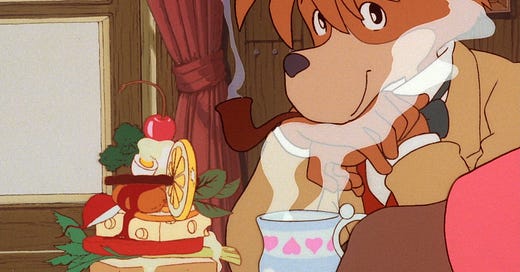Happy Thursday! This issue of the Animation Obsessive newsletter explores something contentious in Japanese animation — the idea of manga eiga, or “cartoon movies.”
Last Thursday, in our survey of the early films of Toei Doga, we mentioned that it isn’t quite accurate to call the studio’s work “anime.” As we noted, Toei:
… referred to its animated films as manga eiga — eiga meaning film, manga meaning cartoon. Like in America, where print cartoons coexisted with animated cartoons, the word manga could refer to either comics or animation.
It’s easy to see this as semantics. Who cares, ultimately, whether you call The Little Prince and the Eight-Headed Dragon anime or manga eiga? What difference does it make? But it goes deeper than words. Once you scratch the surface, you realize that this distinction has mattered a lot — to the culture around anime, to the artistic philosophies of Japanese animators and even to the identity of Studio Ghibli.
Today, we’re trying to shed light on these “cartoon movies,” and to learn why the label has been important to so many people — whether as one to embrace or as one to reject. Here we go!
Keep reading with a 7-day free trial
Subscribe to Animation Obsessive to keep reading this post and get 7 days of free access to the full post archives.



